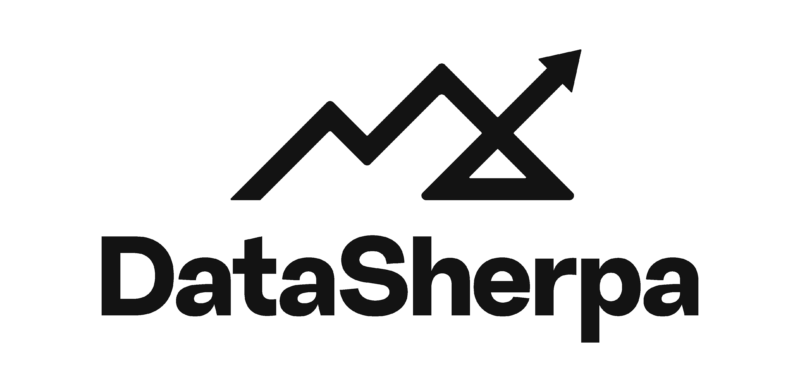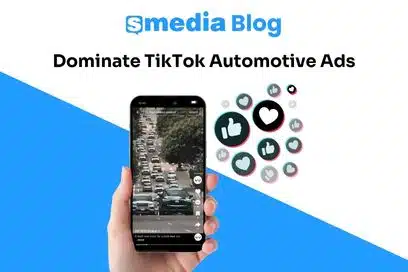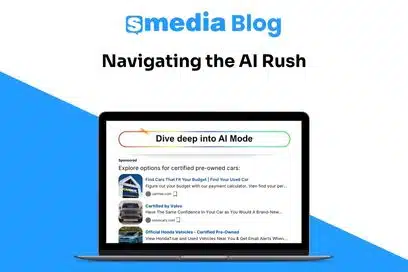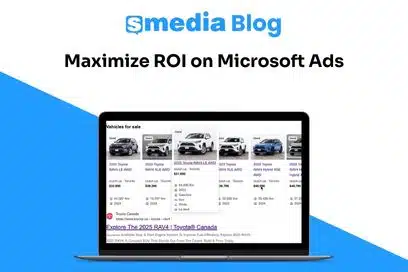There’s a lot of lingo out there when it comes to digital marketing, especially in the automotive space.
At sMedia, we’ve run into a few scenarios where a vendor may be using a term like lead or conversion and it’s not totally clear as to what they’re referring to. We encourage our dealers and our team to clarify when they’re having conversations exactly what they mean, asking questions like “what are you counting as a lead?” and “what is a conversion in this report?”
Vendor reports sometimes only measure those things that the vendor requires for their product or service to perform well. We, therefore, think it’s essential for dealers to have a solid understanding of terms like conversions, leads and attribution mean so that you can have better conversations with your vendors and your sMedia Customer Success Manager.
Ready to learn? Read on.
What is a lead?
A lead is an opportunity to talk to a customer. Typically leads are organized by the method in which the customer contacted the dealership: phone, walk-up, email, chat, SMS or text.
- A new lead at a dealership is often called a “fresh-up”.
- A lead that was in the dealership once and come back is referred to as a “be-back”.
- Sometimes dealerships or vendors will refer to any lead that originated from the internet as an e-lead. This is pretty tricky since nowadays most leads originate from the internet.
Lead sources are the originating source of the lead, typically this is the last place the customer was when they decided to contact the dealership (remember this for when we discuss attribution). Lead sources are typically named by vendors, for example, AutoTrader, AutoFi, Roadster, CarGurus, DealerInspire, and sMedia. It’s a great way for vendors to take credit for leads and show value but it’s a pretty limited view of how your overall marketing plan creates opportunities for a sales team. For example, a radio campaign will never be able to say they generated x number of leads but they likely had some impact on the dealerships’ results. Additionally, a dealership will never be able to accurately attribute walk-up traffic to any one advertising or marketing initiative.
It’s important to note that reporting from vendor to vendor may vary in terms of leads just simply because they may not be measuring the same things. Vendor measurements are rarely agnostic.
What is a conversion?
A conversion is any event or action that a dealership or a vendor considers meaningful. A conversion is not necessarily a lead, a conversion can be a page view or time spent on a particular page. It’s important to note that a dealership can have conversions from multiple vendors so one vendor may not be counting conversions from all of a dealership’s sources. For example, a chat tool on a dealership’s website is often provided by a 3rd party therefore the website vendor may not be tracking chats in their conversion numbers.
Some vendors use the terms hard conversion and soft conversion to differentiate between leads versus desired actions that aren’t direct communication.
Hard conversions have the clearest path to purchase, they can be considered direct or traditional conversions. Leads, phone calls, or chats would typically fall into hard conversions.
Soft conversions are actions taken by a visitor that indicate a positive lift for a product, brand or service. VDP views, picture click-throughs, video watched to completion, and Engaged Prospects are soft conversions.
A conversion path is a process by which an anonymous visitor becomes a known lead. Conversion paths vary by website, service, or product but most conversion paths include a landing page, call-to-action, and thank you page or endpoint. Conversion paths start by attracting visitors, converting them, and closing them. If a campaign isn’t converting then it’s possible that you need to optimize the conversion path.
What is attribution?
Attribution is the act of regarding something as being caused by a person or a thing. In the case of marketing, attribution is the act of regarding conversions as being caused by your marketing. Ultimately, attribution reporting gives you a framework around which to evaluate your overall marketing efforts and determine how and where your marketing is making an impact.
Most vendor reports (unless they’re strictly an attribution vendor) don’t include true attribution reporting. The reason is that attribution is complex and time-consuming, it requires tying in multiple vendors and tools, and needs regular maintenance to keep everything together.
Attribution models include (source):
- Last click: Gives all credit for the conversion to the last clicked ad and corresponding keyword.
- First click: Gives all credit for the conversion to the first clicked ad and corresponding keyword.
- Linear: Distributes the credit for the conversion equally across all interactions on the path.
- Time decay: Gives more credit to interactions that happened closer in time to the conversion. Credit is distributed using a 7-day half-life. In other words, an ad interaction 8 days before a conversion gets half as much credit as an ad interaction 1 day before a conversion.
- Position-based: Gives 40% of the credit to both the first and last ad interactions and corresponding keywords, with the remaining 20% spread out across the other ad interactions on the path.
- Last Click Non-Direct: ignores direct traffic and attributes 100% of the conversion value to the last channel that the customer clicked through from before buying or converting. Analytics uses this model by default when attributing conversion value in non-Multi-Channel Funnels reports.
- ***Data-driven: Distributes credit for the conversion based on your past data for this conversion action. It’s different from the other models, in that it uses your account’s data to calculate the actual contribution of each interaction across the conversion path.
The insights provided by these models into how, where, and when a consumer interacts with a brand or business allows marketing teams or business owners to alter and customize campaigns, shift spending or re-evaluate conversion paths to meet the specific desires of individual consumers, thus improving marketing ROI.
In our next installment of Behind The Wheel we will explain how data integrity is a problem most dealers have, and what you can do about it.
Looking for an Attribution Tool built for dealers with the features dealers asked for? You can’t do better than DataSherpa!






